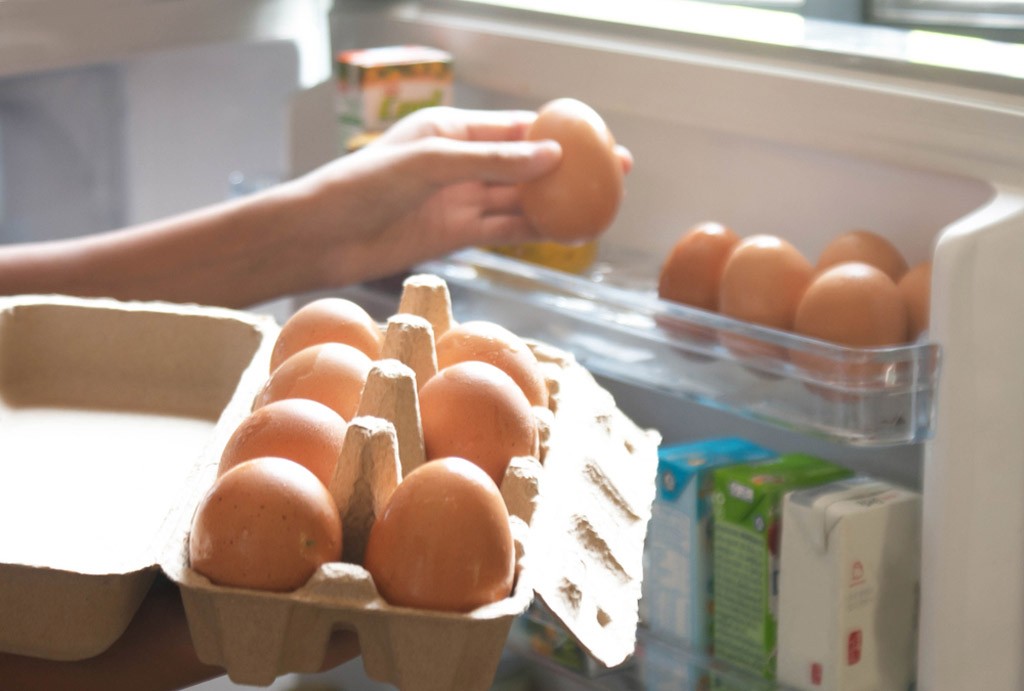6 Tips for Safe Food Storage — Keep Food Fresher for Longer

Much of the UK public is storing food items incorrectly, which is increasing a combination of household and commercial kitchen food waste and putting health at risk. Storing eggs within storage or holders that are built into fridge doors poses a health or spoiling risk for an easily overlooked reason.
Eggs should be stored within refrigerators at around 4 °C to remain fresh and safe to consume. However, storing eggs within frequently opened and closed refrigerator doors, especially in commercial environments, can lead to a fluctuation and rise in temperature. This can accelerate egg spoilage. With this constant temperature disruption, eggs will rise in temperature away from the optimum 4 °C. If this disruption is continuous, and the optimum temperature is surpassed upward, anything over 4 °C poses the risk of bacteria such as salmonella.
Furthermore, eggs should be stored with the pointed end facing downwards. This helps to keep the yolk centred and prevents it from touching the shell, which can cause it to stick and make the egg more difficult to peel.
There also remain misconceptions surrounding the storage of bread, which is one of the top five items most commonly wasted. Bread should be stored in a cupboard – if you put it in a fridge, it will stale about six times more quickly because at cooler temperatures, starch tends to crystallize, and this process occurs roughly six times faster at refrigerator temperatures than at room temperature.
When it comes to cheese, this should be wrapped in parchment paper. This will help to keep the cheese from drying out while still allowing it to breathe. You can then place the wrapped cheese in a plastic container or wrap it in foil for further protection.
We’ve all seen onions stored within nets in shops and supermarkets. This is to stop each onion from touching, which can cause them to spoil faster. If an old pair of tights are to hand, these can be used to store onions so long as a knot is tied in between each one. Hang the tights in a cool, dry place for optimal storage and to prevent waste.
Finally, when it comes to temperature, the recommended temperature range for a fridge is between 0 °C to 5 °C, and for a freezer, it is below -18 °C. Maintaining these temperatures will ensure that food stays fresh for as long as possible and prevents the growth of harmful bacteria. If there is a power outage, keep the doors of your fridge and freezer closed to maintain the temperature as much as possible. A fully stocked freezer can typically keep food frozen for up to 48 hours, while a fridge can keep food cool for up to 4 hours. Using a fridge/freezer thermometer enables easy monitoring of your cold storage temperatures. However, food will warm up at a slower rate than the air temperature in your fridge or freezer, so if you’re concerned about a rise in in temperature, use a food probe thermometer to take core temperatures of your food. Where you place your fridge and freezer can also affect their temperature. Keep them away from sources of heat such as radiators, direct sunlight, or the oven.
Jason Webb, managing director of Electronic Temperature Instruments Ltd, said: “There are many overlooked food storage mistakes that can result in financial loss and high wastage, but also health and reputational damage. We need to rethink our approach to food storage to best preserve produce. Eggs should be kept within the main body of refrigerators, preferably towards the back in an uncrowded area. This mistake is amplified by the common design of refrigerators facilitating this incorrect method of storage. It’s always critical to ensure any raw produce is kept at a correct, consistent and optimum temperature that is monitored and controlled.”
You might also like:
The Ultimate Digital Thermometer Guide — Types, Features & Probes
4 Best Garden Thermometers for Greenhouses, Soil & Compost
Top 5 Room Thermometers for Saving Energy